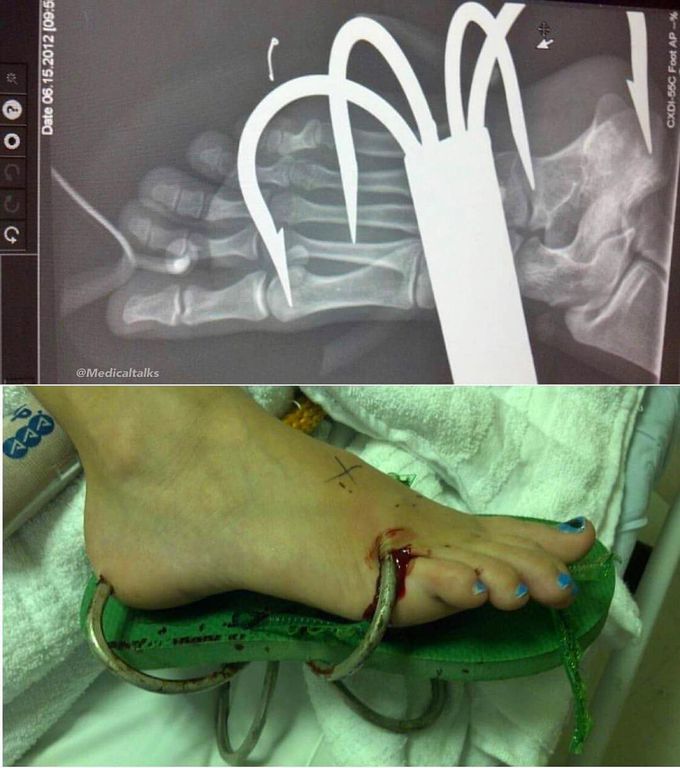


Teenage girl tripped over the biggest shark hook!!
While most people are suffering from fishhook injuries, which are small and only penetrate superficially, this patient was unlucky to have this large shark hook deeply embedded in her foot! Although this hook can not be missed easily, identification of a other smaller fish hooks can be difficult, depending on the type and location of the wound and the timing and mechanism of injury. Soft tissue foreign bodies most commonly occur secondary to penetrating or abrasive trauma, and they can result in patient discomfort, deformity, delayed wound healing, localized and systemic infection, and further trauma during attempts at removal. Physical examination of the affected area should adequately assess for nerve, tendon, vessel, and joint involvement. Adequate local anesthesia and proper irrigation are important factors in controlling the pain and reducing the risk of would infection upon and after the removal of the foreign object. Large volumes of irrigant (sterile isotonic saline) at sufficient pressures is needed to reduce or eliminate particulate matter and foreign bodies, which, if left in the wound, can reduce the inoculum of bacteria required to cause infection. No single technique is best for the removal of foreign bodies. Each case is addressed independently based on the patient’s medical history and the clinical presentation of the wound.

